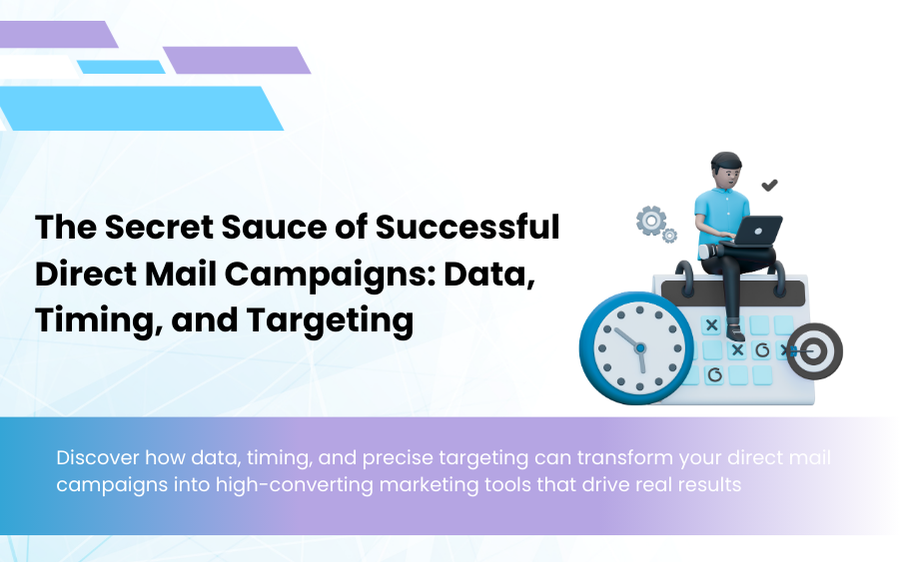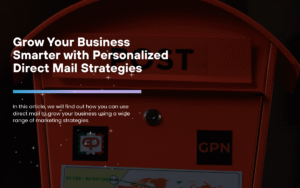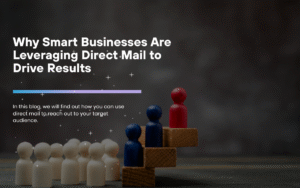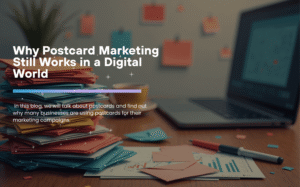Direct mail has made a tremendous comeback, surprising people, especially those who thought that it was no longer relevant. On the contrary, direct mail has proven to be quite effective when it comes to promoting your brand or informing consumers about your products and services. In comparison to other forms of communication, direct mail is much more personalized, making the consumers feel more important, eventually increasing the conversion rate and delivering a higher ROI for the companies.
In this blog, we will dive deep into the world of direct mail and find out how it continues to deliver consistently, remaining a valuable asset for organizations that rely on it as a means of communication. Whether you are a start-up or an established organization, you need to promote your brand; otherwise, you will no longer remain relevant, and what better way to do so than direct mail.
Precision Targeting with High-Quality Data
Effective campaigns start with accurate lists. Lob reports that high-ROI marketers are 163% more likely to use clean, enriched data for precise targeting, a critical advantage in maximizing engagement and reducing mail waste.
Modern direct mail is not about blasting every house on a block; it’s about zeroing in on the right audience:
- New homeowner lists
- Recent movers
- Property-level segmentation: ZIP code, home value, mortgage date
With the right filters, brands can tailor messages that feel personal and timely, completely avoiding the fate of mailers that get tossed unread. Lob’s data shows that 72% of recipients discard mail that doesn’t apply to them.
Timing That Hits the Moment
Direct mail’s effectiveness often comes down to reaching people at the right moment. Lob reveals that 84% of consumers read mail the same day or immediately upon receipt, up from 70% just a year ago.
For businesses focused on new homeowner or local service audiences, timing is everything:
- Mail within the first 7–14 days post-move
- Follow-up across several touches over 30–90 days
- Tie sends to seasonal needs (e.g., HVAC service before summer, gutter cleaning in fall)
Consistent, well-timed touchpoints ensure your brand stays top of mind rather than forgotten.
Personalization The Difference-Maker
Generic mail feels like junk. Research shows that 44% of recipients respond when the message is relevant, 52% act on a compelling offer, and 42% respond when the brand is familiar. Meanwhile, 81% of consumers say mailers make them more likely to re-engage with a brand.
But personalization isn’t just inserting a name. High-performance teams are 32% more likely to tie mailers to behavior (cart actions, browsing, purchase history), dynamically adjust copy, or trigger mail at scale using real-time data.
Examples:
- A newcomer in the neighborhood gets a welcome discount.
- A recent homebuyer receives a plumbing or HVAC check offer.
- A previous customer gets a maintenance reminder or loyalty perk.
This level of personalization transforms mail from forgettable clutter into meaningful communication.
Why Integration & Automation Matter
Direct mail isn’t manual anymore, it’s part of a broader marketing tech stack. Lob highlights that marketers investing in automation and operations efficiency are far ahead in scaling without sacrificing relevance or ROI.
When direct mail is integrated with digital elements like:
- QR codes
- Personalized URLs (PURLs)
- Call tracking
- Trigger-based mail via CRM or e‑commerce data
…it becomes a measurable, integrated touchpoint that complements email, social, or display ads.
In fact, response rates for direct mail have risen to 7.5% in 2025, compared to about 1.8% for email or 1.4% for social ads.
Overall ROI & Business Confidence
Despite rising postal and production costs, brands are doubling their direct mail volume, jumping from 34.9M pieces in 2024 to 67.3M planned in 2025.
Why? Because 79% of executives rank direct mail as their highest-ROI channel, and 81% of consumers take action after receiving mail.
Financial services, insurance, real estate, and healthcare sectors are leading the way, capitalizing on mail’s trust-building power to complement their digital efforts.
Putting It All Together
When data, timing, and targeting align, direct mail becomes far more than an “old-school” tactic; it becomes a modern engagement powerhouse. Smart marketers in 2025 are:
- Using new homeowner and mover lists for precision targeting
- Sending well-timed, multi-touch campaigns
- Personalizing messages based on behavior and buyer intent
- Automating workflows to scale efficiently
- Integrating mail with digital tracking to optimize performance
The result: physical mail that’s timely, relevant, memorable, and impactful.
Final Takeaway
Direct mail in 2025 is a strategic powerhouse, but only for teams who send smart, not just more. Prioritize quality data, empathetic timing, and real personalization, and you’ll see mailers that build trust, prompt action, and deliver ROI that digital alone can’t touch.
Want help designing a campaign that combines all three ingredients: data, timing, and targeting? I’d be glad to help build your next high-performing direct mail funnel.






